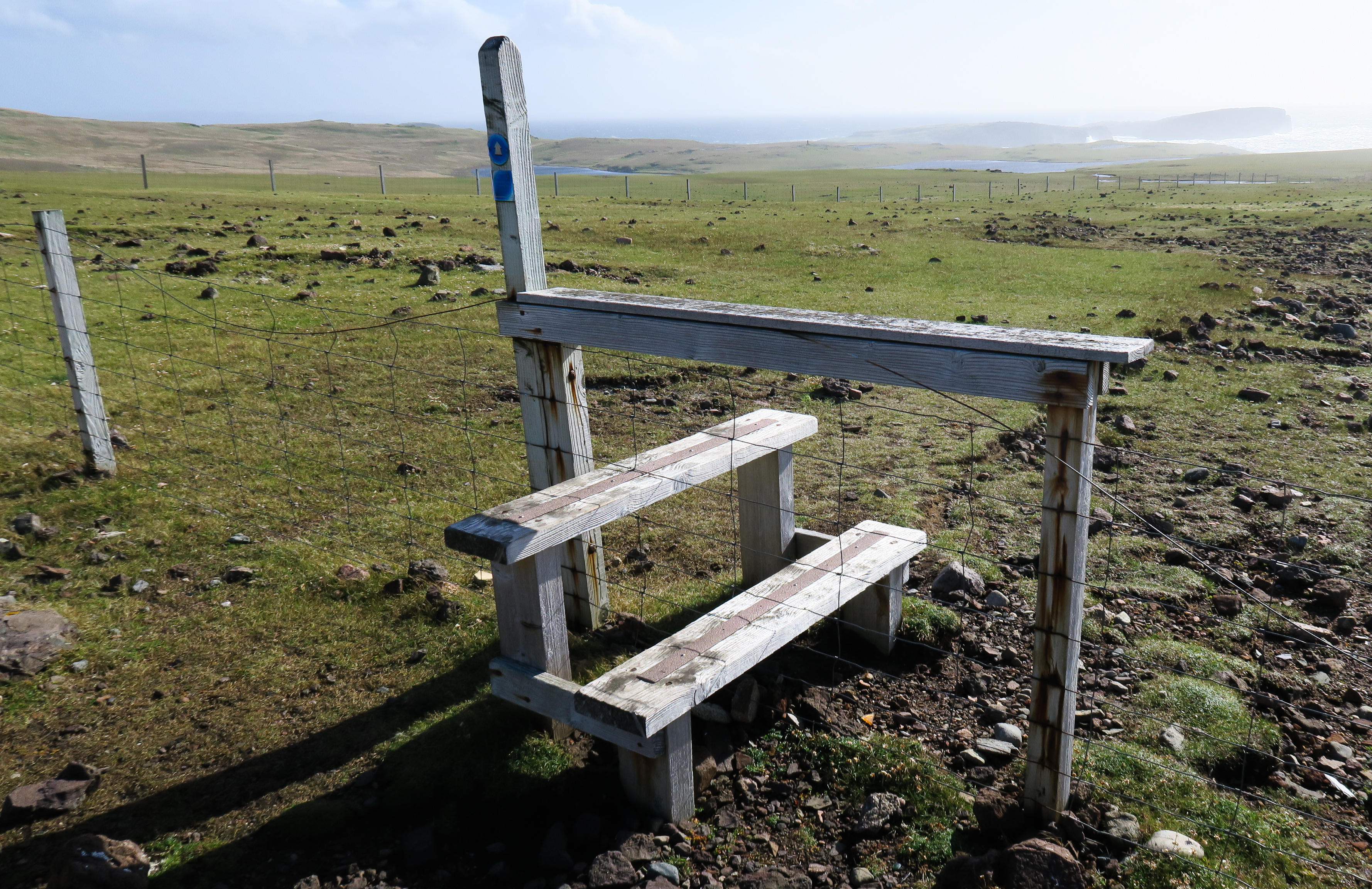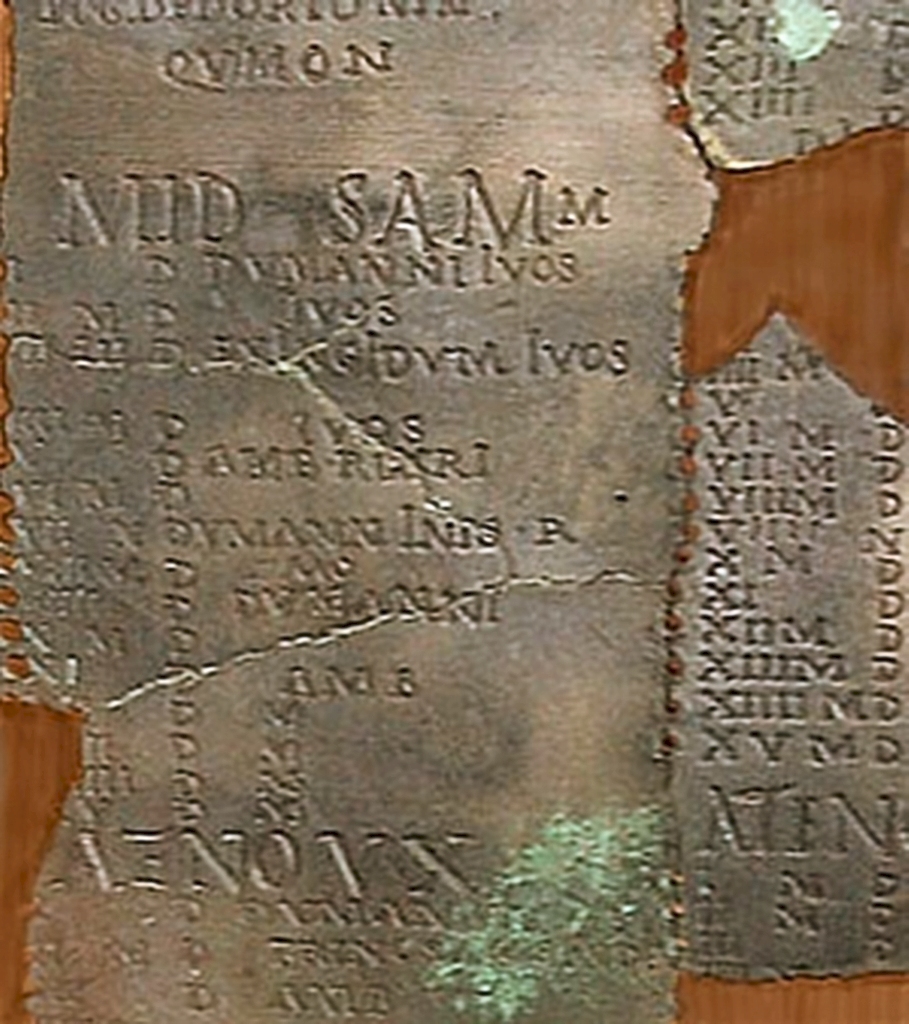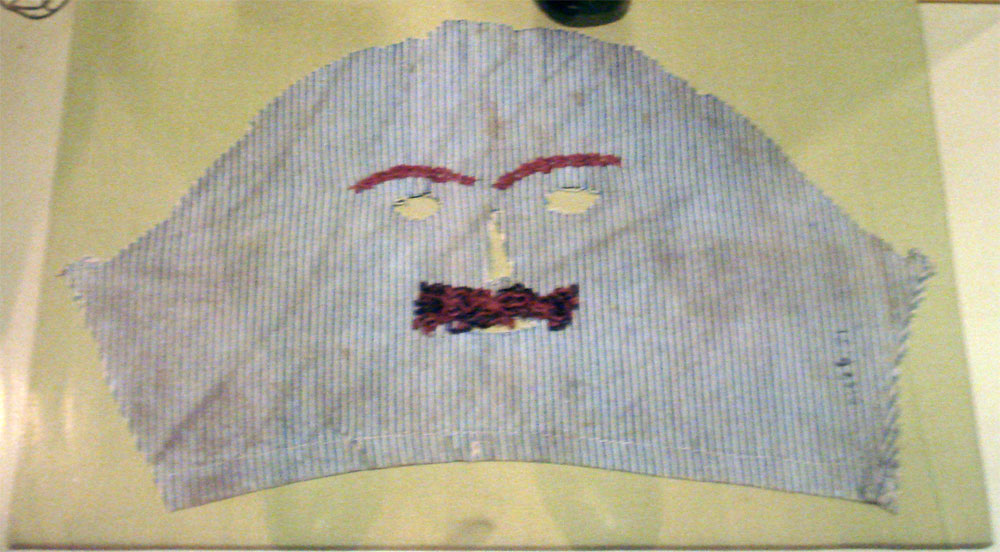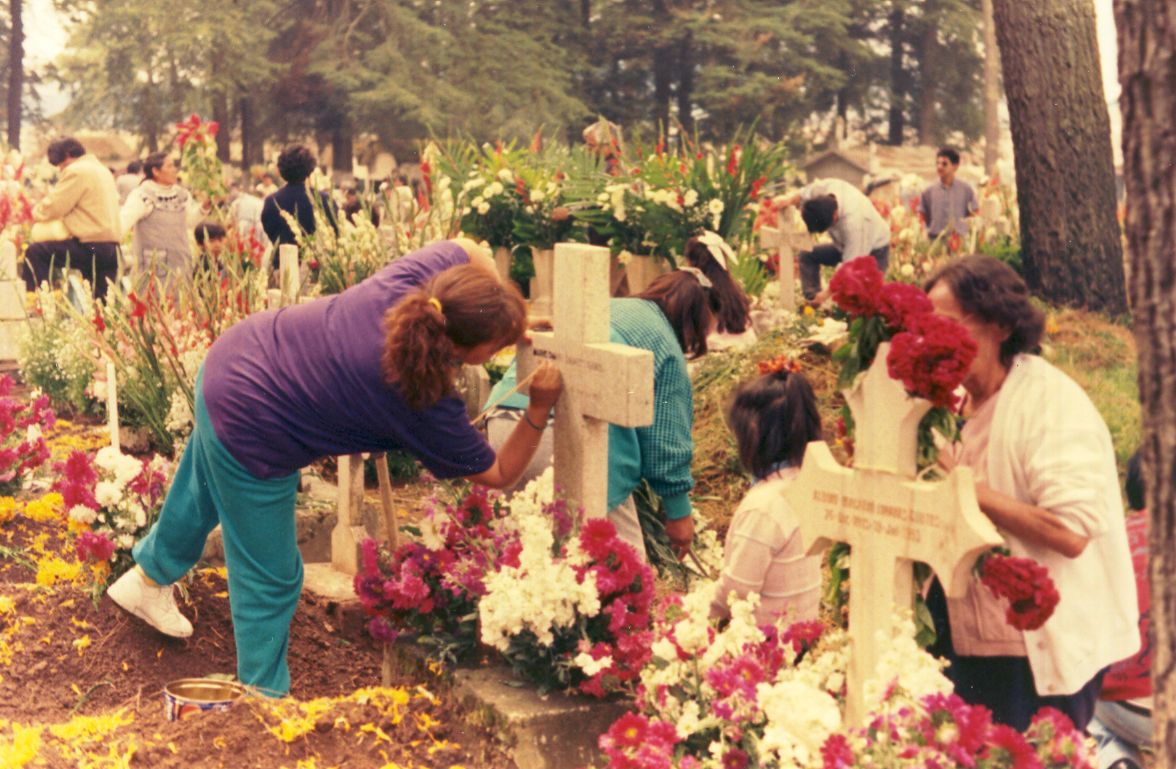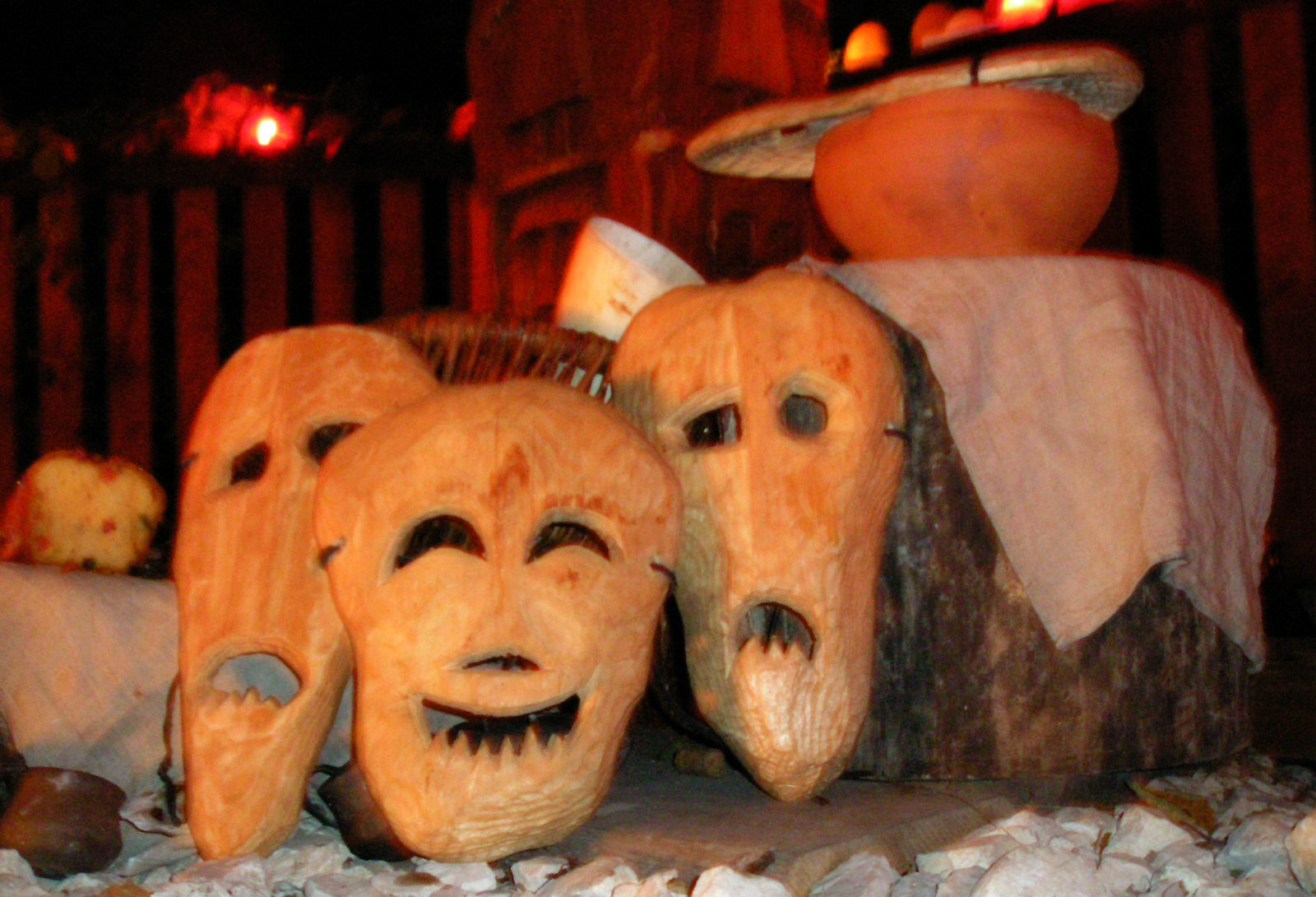|
Calan Gaeaf
''Calan Gaeaf'' is the name of the first day of winter in Wales, observed on 1 November. The night before is ''Nos Galan Gaeaf'' or ''Noson Galan Gaeaf'', an ''Ysbrydnos'' ("spirit night") when spirits are abroad. Traditionally, people avoid churchyards, stiles, and crossroads, since spirits are thought to gather there. The term is first recorded in literature as "''Kalan Gayaf"'' in the laws of Hywel Dda. The same term, '' Kalan Gwav'', is found in the Cornish language, and ''Kalan Goañv'' in Breton. Traditions Dancing On ''Nos Calan Gaeaf'', women and children would dance around a bonfire and everyone would write their names on, or otherwise mark, rocks and place them in and around said fire. When the fire started to die out, they would all run home, believing if they stayed, ''Yr Hwch Ddu Gwta'' (a bad omen that took the form of a tailless black sow with a headless woman) or ''Y Ladi Wen'' ("the white lady", a ghostly apparition often said to be headless) would chase ... [...More Info...] [...Related Items...] OR: [Wikipedia] [Google] [Baidu] |
Wales
Wales ( ) is a Countries of the United Kingdom, country that is part of the United Kingdom. It is bordered by the Irish Sea to the north and west, England to the England–Wales border, east, the Bristol Channel to the south, and the Celtic Sea to the south-west. , it had a population of 3.2 million. It has a total area of and over of Coastline of Wales, coastline. It is largely mountainous with its higher peaks in the north and central areas, including Snowdon (), its highest summit. The country lies within the Temperate climate, north temperate zone and has a changeable, Oceanic climate, maritime climate. Its capital and largest city is Cardiff. A distinct Culture of Wales, Welsh culture emerged among the Celtic Britons after the End of Roman rule in Britain, Roman withdrawal from Britain in the 5th century, and Wales was briefly united under Gruffudd ap Llywelyn in 1055. After over 200 years of war, the Conquest of Wales by Edward I, conquest of Wales by King Edward I o ... [...More Info...] [...Related Items...] OR: [Wikipedia] [Google] [Baidu] |
Stile
A stile is a structure or opening that provides passage for humansrather than animals such as livestockover or through a boundary. Common forms include steps, ladders, or narrow gaps. Stiles are often built in rural areas along footpaths, fences, walls, or hedges that enclose domestic animals. Types In the United Kingdom many stiles were built under legal compulsion (see Rights of way in the United Kingdom). Recent changes in UK government policy towards farming have encouraged upland landowners to make access more available to the public, and this has seen an increase in the number of stiles and an improvement in their overall condition. However stiles are deprecatedBritish Standard BS5709:2018 Gaps Gates & Stiles () and are increasingly being replaced by gates or kissing gates or, where the field is arable, the stile removed. Many legacy stiles remain, however, in a variety of forms (as is also the case in the US, where there is no standard). As well as having a variety ... [...More Info...] [...Related Items...] OR: [Wikipedia] [Google] [Baidu] |
Hywel Dda
Hywel ap Cadell, commonly known as Hywel Dda, which translates to Howel the Good in English, was a Welsh king who ruled the southern Welsh kingdom of Deheubarth and eventually came to rule most of Wales. He became the sole king of Seisyllwg in 920 and shortly thereafter established Deheubarth, and proceeded to gain control over the entire country from Prestatyn to Pembroke. As a grandson of Rhodri Mawr through his father Cadell, Hywel was a member of the Dinefwr branch of the dynasty. He was recorded as King of the Britons in the '' Annales Cambriæ'' and the ''Annals of Ulster''. Hywel is highly esteemed among other medieval Welsh rulers. His name is particularly linked with the codification of traditional Welsh law, which were thenceforth known as the Laws of Hywel Dda. The latter part of his name (''Dda'', lit. "Good") refers to the fact that his laws were just and good. The historian Dafydd Jenkins sees in them compassion rather than punishment, plenty of common ... [...More Info...] [...Related Items...] OR: [Wikipedia] [Google] [Baidu] |
Allantide
Allantide (, meaning ''first day of winter'', or ''Nos Kalan Gwav'', meaning ''eve of the first day of winter'' and ''Dy' Halan Gwav'', meaning ''day of the first day of winter''), also known as Saint Allan's Day or the Feast of Saint Allan, is a Cornish festival that was traditionally celebrated on the night of 31 October, as well as the following day time, and known elsewhere as Allhallowtide. The festival in Cornwall is the liturgical feast day of St Allan (also spelled St Allen or St Arlan), who was the bishop of Quimper in the sixth century. As such, Allantide is also known as Allan Night and Allan Day. The origins of the name Allantide also probably stem from the same sources as Hollantide (Wales and the Isle of Man) and Hallowe'en itself. The Cornish language name for the festival is found in the Exeter Consistory Court depositions for the year 1572. It was reported in the court case that an altercation occurred ''upon Dew Whallan Gwa Metten in Eglos De Lalant, viz. ... [...More Info...] [...Related Items...] OR: [Wikipedia] [Google] [Baidu] |
Cornish Language
Cornish (Standard Written Form: or , ) is a Southwestern Brittonic language, Southwestern Brittonic language of the Celtic language family. Along with Welsh language, Welsh and Breton language, Breton, Cornish descends from Common Brittonic, a language once spoken widely across Great Britain. For much of the Middle Ages, medieval period Cornish was the main language of Cornwall, until it was gradually pushed westwards by the spread of English language, English. Cornish remained a vernacular, common community language in parts of Cornwall until the mid-18th century, and there is some evidence for traditional speakers persisting into the 19th century. Cornish became extinct language, extinct as a living community language in Cornwall by the last speaker of the Cornish language, end of the 18th century, although knowledge of Cornish, including speaking ability to a certain extent, persisted within some families and individuals. Cornish language revival, A revival started in the e ... [...More Info...] [...Related Items...] OR: [Wikipedia] [Google] [Baidu] |
Breton Language
Breton (, , ; or in Morbihan) is a Southwestern Brittonic language of the Celtic languages, Celtic language group spoken in Brittany, part of modern-day France. It is the only Celtic language still widely in use on the European mainland, albeit as a member of the Insular Celtic languages, insular branch instead of the extinct Continental Celtic languages, continental grouping. Breton was brought from Great Britain to Armorica (the ancient name for the coastal region that includes the Brittany peninsula) by migrating Britons (Celtic people), Britons during the Early Middle Ages, making it an Insular Celtic language. Breton is most closely related to Cornish language, Cornish, another Southwestern Brittonic language. Welsh language, Welsh and the extinct Cumbric language, Cumbric, both Western Brittonic languages, are more distantly related, and the Goidelic languages (Irish language, Irish, Manx language, Manx, Scottish Gaelic) have a slight connection due to both of their origi ... [...More Info...] [...Related Items...] OR: [Wikipedia] [Google] [Baidu] |
Apple Bobbing
An apple is a round, edible fruit produced by an apple tree (''Malus'' spp.). Fruit trees of the orchard or domestic apple (''Malus domestica''), the most widely grown in the genus, are cultivated worldwide. The tree originated in Central Asia, where its wild ancestor, '' Malus sieversii'', is still found. Apples have been grown for thousands of years in Eurasia before they were introduced to North America by European colonists. Apples have cultural significance in many mythologies (including Norse and Greek) and religions (such as Christianity in Europe). Apples grown from seeds tend to be very different from those of their parents, and the resultant fruit frequently lacks desired characteristics. For commercial purposes, including botanical evaluation, apple cultivars are propagated by clonal grafting onto rootstocks. Apple trees grown without rootstocks tend to be larger and much slower to fruit after planting. Rootstocks are used to control the speed of growth and th ... [...More Info...] [...Related Items...] OR: [Wikipedia] [Google] [Baidu] |
Samhain
Samhain ( , , , ) or () is a Gaels, Gaelic festival on 1 November marking the end of the harvest season and beginning of winter or the "Celtic calendar#Medieval Irish and Welsh calendars, darker half" of the year.Dáithí Ó hÓgáin, Ó hÓgáin, Dáithí. ''Myth Legend and Romance: An Encyclopaedia of the Irish Folk Tradition''. Prentice Hall Press, 1991. p. 402. Quote: "The basic Irish division of the year was into two parts, the summer half beginning at Bealtaine (May 1st) and the winter half at Samhain (November 1st) ... The festivals properly began at sunset on the day before the actual date, evincing the Celtic tendency to regard the night as preceding the day". It is also the Irish and Scottish Gaelic name for November. Celebrations begin on the evening of 31 October, since the Celtic calendar#Medieval Irish and Welsh calendars, Celtic day began and ended at sunset. This is about halfway between the September equinox, autumnal equinox and winter solstice. It is one of ... [...More Info...] [...Related Items...] OR: [Wikipedia] [Google] [Baidu] |
Halloween
Halloween, or Hallowe'en (less commonly known as Allhalloween, All Hallows' Eve, or All Saints' Eve), is a celebration geography of Halloween, observed in many countries on 31 October, the eve of the Western Christianity, Western Christian feast of All Saints' Day, All Hallows' Day. It is at the beginning of the observance of Allhallowtide, the time in the Christian liturgical year dedicated to remembering the dead, including saints (hallows), Christian martyr, martyrs, and all the faithful departed. In popular culture, Halloween has become a celebration of Horror fiction, horror and is associated with the macabre and the supernatural. One theory holds that many Halloween traditions were influenced by Celts, Celtic harvest festivals, particularly the Gaels, Gaelic festival Samhain, which are believed to have Paganism, pagan roots. Some theories go further and suggest that Samhain may have been Christianization, Christianized as All Hallows' Day, along with its eve, by the Ear ... [...More Info...] [...Related Items...] OR: [Wikipedia] [Google] [Baidu] |
Day Of The Dead
The Day of the Dead () is a holiday traditionally celebrated on November 1 and 2, though other days, such as October 31 or November 6, may be included depending on the locality. The multi-day holiday involves family and friends gathering to pay respects and remember friends and family members who have died. These celebrations can take a humorous tone, as celebrants remember amusing events and anecdotes about the departed. It is widely observed in Mexico, where it largely developed, and is also observed in other places, especially by people of Mexican heritage. The observance falls during the Christian period of Allhallowtide. Some argue that there are Indigenous Mexican or ancient Aztec influences that account for the custom, though others see it as a local expression of the Allhallowtide season that was brought to the region by the Spanish; the Day of the Dead has become a way to remember those forebears of Mexican culture. The Day of the Dead is largely seen as having a festi ... [...More Info...] [...Related Items...] OR: [Wikipedia] [Google] [Baidu] |
Dziady
Dziady ( "grandfathers, eldfathers", sometimes translated as Forefathers' Eve) is a term in Slavic folklore for the spirits of the ancestors and a collection of pre-Christian rites, rituals and customs that were dedicated to them. The essence of these rituals was the "communion of the living with the dead", namely, the establishment of relationships with the souls of the ancestors, periodically returning to their headquarters from the times of their lives. The aim of the ritual activities was to win the favor of the deceased, who were considered to be caretakers in the sphere of fertility. The name "dziady" was used in particular dialects mainly in Belarus, Poland, Polesia, Russia, and Ukraine (sometimes also in border areas, e.g. Podlachia, Smoleńsk Oblast, Aukštaitija), but under different other names (''pomynky'', ''przewody'', ''radonitsa'', '' zaduszki'') there were very similar ritual practices, common among Slavs and Balts, and also in many European and even non-Europea ... [...More Info...] [...Related Items...] OR: [Wikipedia] [Google] [Baidu] |
Winter Nights
Winter Nights () was a specific time of year in medieval Scandinavia, held 28 days after the autumn equinox. According to Zoega's ''Concise Dictionary of Old Icelandic'', ''vetr-nætr'' referred to "the three days which begin the winter season". The term is attested in the narrative of some of the ''Fornaldarsögur'', mostly to express passage of time ("as autumn turned into winter"). The first day of weather was believed to set the course for the rest of the winter, for example snow during the event would mean a snowy winter. It would usually be marked with a leaf-less (defoliated) tree. The exact term "winter nights" is not mentioned in the Ynglinga saga by Snorri Sturluson where (in chapter 8) the three great sacrifices of the year are prescribed: Specific sacrifices held at the beginning of winter during the Old Norse period were álfablót and dísablót. Of these, dísablót came to be a public sacrifice, according to the Ynglinga saga performed by the king of Sweden. By ... [...More Info...] [...Related Items...] OR: [Wikipedia] [Google] [Baidu] |
